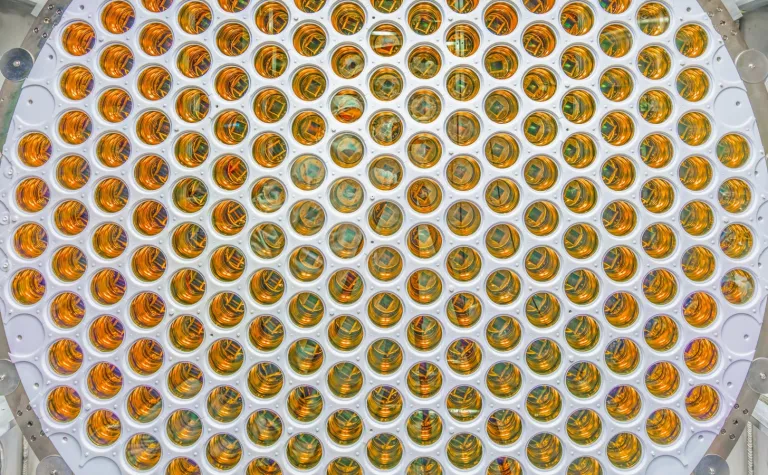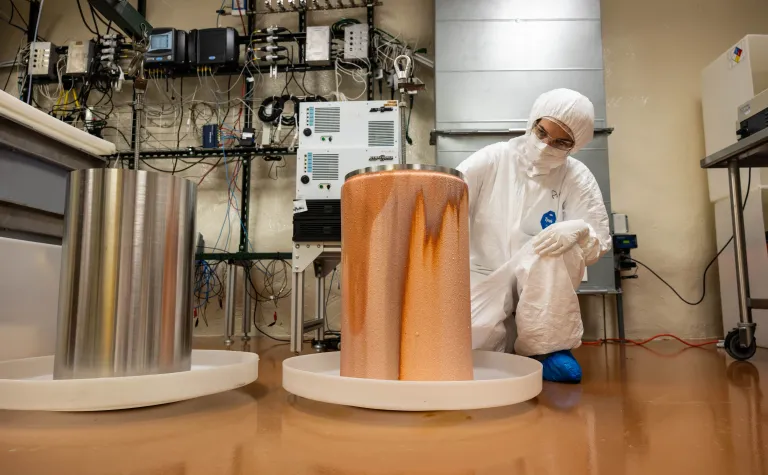NSF Awards $7 Million to South Dakota to Launch Ge-STAR, a Germanium Research Initiative involving SURF
The National Science Foundation has awarded a $7 million EPSCoR RII E-RISE grant to launch Ge-STAR: Germanium-based Science and Technology Advancement Research, a transformative project involving universities across the state and research at SURF.
The initiative, led by the University of South Dakota, aims to position South Dakota at the forefront of germanium science and technology by integrating advanced artificial intelligence into crystal growth, detector development, and next-generation applications in physics and medicine.
Ge-based detectors are central to groundbreaking research in dark matter detection, neutrino physics, and medical imaging. Ge-STAR seeks to harness these capabilities by creating high-purity germanium crystals and fabricating detectors with unmatched sensitivity. By moving from traditional trial-and-error methods to AI-driven optimization, the project will enable real-time data analysis, improve material quality, and revolutionize how detectors are designed for ultra-sensitive measurements.
Ge-STAR will also strengthen the Sanford Underground Research Facility, enhancing its role as a national laboratory for rare-event physics experiments. The technology developed under Ge-STAR will enable internal charge amplification and machine learning-based background suppression, critical for detecting extremely low-energy events such as interactions from low-mass dark matter particles and solar neutrinos.
“SURF is thrilled with the announcement of this award and the opportunity to strengthen ties with researchers across South Dakota,” said Jaret Heise, director of science at SURF. “Germanium technologies have seen several applications at SURF, from sensors used to explore properties of subatomic neutrinos to detectors that characterize tiny amounts of impurities in experiment components. The potential for germanium to be used in searches for low-mass dark matter is very exciting and well-aligned with U.S. high-energy physics scientific priorities.”
Beyond fundamental science, the project is expected to transform medical imaging and improve early disease detection, including applications in precision oncology and radiation therapy. AI-assisted imaging techniques developed under Ge-STAR will support faster, more accurate diagnoses while reducing radiation exposure, offering benefits for patient care, particularly in rural communities.
“This project is a major step forward for South Dakota’s research ecosystem,” said Dongming Mei, Ph.D., principal investigator at USD. “By integrating AI into germanium technology, we will accelerate innovation, advance fundamental science and deliver practical applications in health care.”
The four-year project brings together a strong consortium of six South Dakota institutions—USD, South Dakota Mines, South Dakota State University, Black Hills State University, Dakota State University, and Mount Marty University—working alongside major health care partners Sanford Health and Avera Health. More than 20 researchers will collaborate on this initiative, bridging expertise in physics, engineering, computer science and materials science. More information on the NSF awards can be found here.
Education and workforce development are at the core of Ge-STAR’s mission. Over the next four years, the project will train 100 graduate and undergraduate students, engage 28 K-12 teachers and 350 students and launch a new ABET-accreditable Computational Medical Physics specialization within USD’s undergraduate physics program.
This specialization addresses a growing demand for professionals with expertise in AI-enhanced medical imaging and will strengthen the state’s talent pipeline in high-tech sectors.
“This is not just a research project; it’s an investment in South Dakota’s future,” said Mei. “Ge-STAR will create high-paying jobs, foster industry partnerships and bring global attention to South Dakota as a leader in AI-driven materials science.”
By combining cutting-edge technology, education and collaboration, Ge-STAR is poised to deliver transformative advances in science and medicine while contributing to economic growth and innovation across the region.



